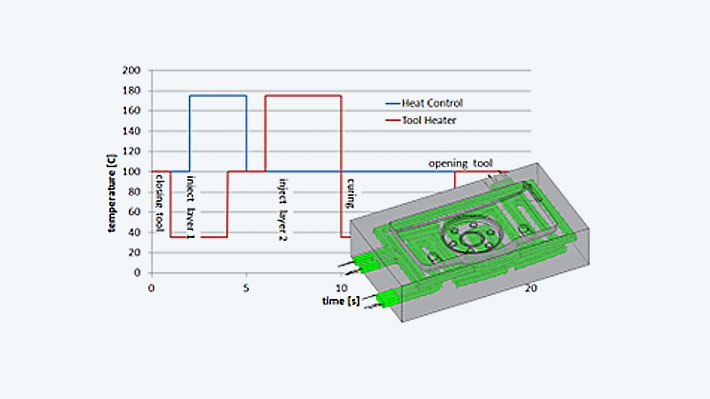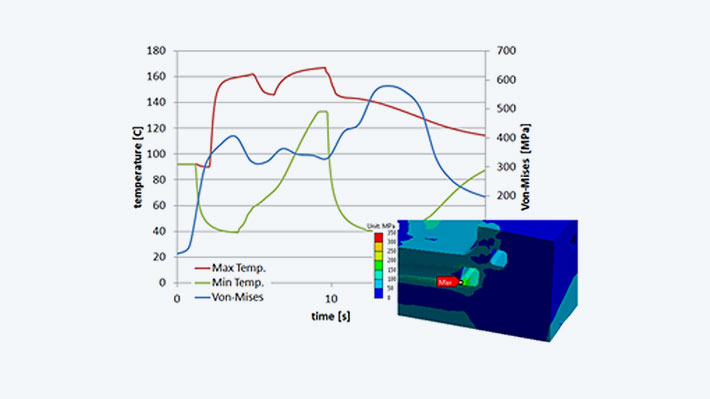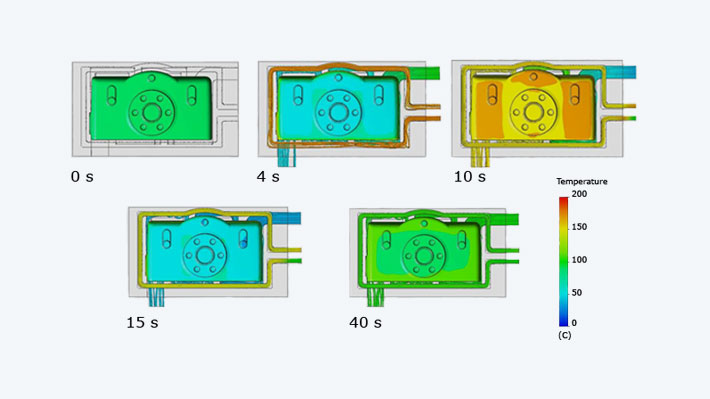Injection molding simulation with Ansys CFX
Sector: Automotive (motor vehicles/trucks), Construction, Consumer goods/durable goods, Machinery and plant engineering, Plastic and rubber, Rail vehicle construction, ShipbuildingSpecialist field: Fluid mechanics, Heat Transfer, Structural mechanicsThe Swiss company FOBOHA, which is part of Adval Tech Holding, is focused on sophisticated plastic parts and the associated tool and mold construction. The specialists commissioned CADFEM with a thermal simulation in Ansys for an injection mold.
Summary
Task
For an injection mold with a different fluid circuit layout, the time-dependent temperature development on the mold surface is to be investigated in order to optimize it with a computer-aided fluid dynamics analysis.
Solution
With a transient CFD analysis in ANSYS CFX, the complete mold flow process is mapped.
Customer benefits
By means of the transient CFD analysis, the Adval Tech / FOBOHA company obtained accurate information about the temperature distribution with focus on the mold surface.
Project Details
Task
Adval Tech FOBOHA (Switzerland) AG develops, designs and manufactures high-performance molds. The surface temperature of the mold is controlled by cooling and heating channels with specific temperature profiles over time. For an injection mold with different fluid circuit layout, the time-dependent temperature development on the mold surface is investigated and optimized with a computer-aided fluid dynamics analysis.

Customer Benefit
By means of the transient CFD analysis, the company Adval Tech / FOBOHA obtained precise information about the temperature distribution with focus on the mold surface. The most efficient layout could be shown. The influences of different circuit layouts were shown and made understandable. A homogeneous distribution supports a faster injection cooling circuit and generates a more uniform material distribution.

Solution
A transient CFD analysis in ANSYS CFX is used to model the entire mold flow process. After closing the mold, two different plastics are injected and cooled down one after the other. During this process, the heat flows between the cooling circuit and the mold are simulated. The main focus is on examining the mold surface to analyze the cooling and solidification of the plastic. Different designs are compared and examined for temperature homogeneity and surface temperature response time. Due to the temperature differences of about 120° Celsius, the large thermal expansion leads to stresses in the component. These are calculated and evaluated transiently in ANSYS Mechanical.

Images: © advaltech




